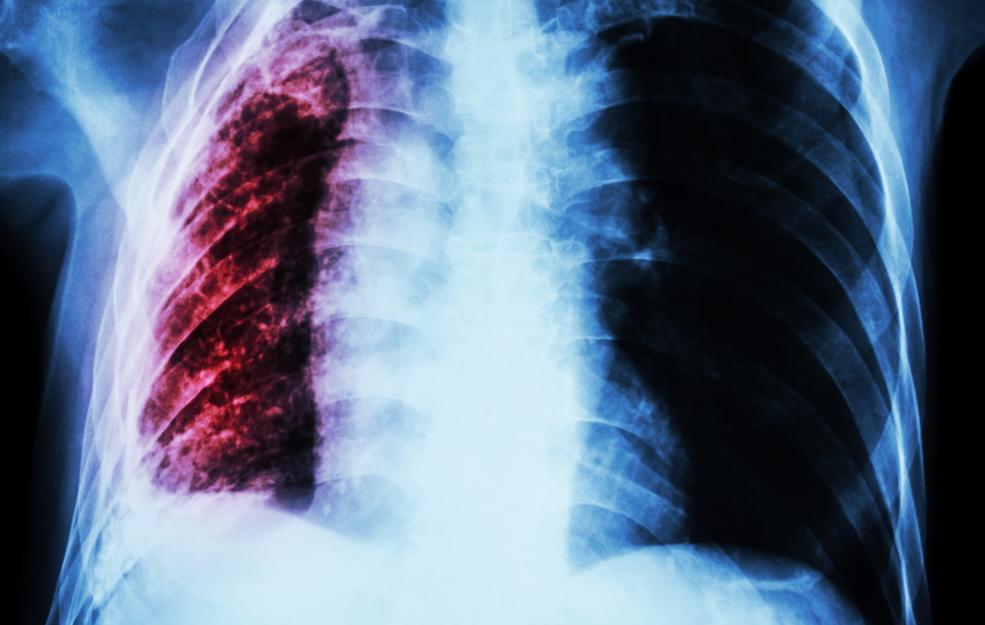What Is Atelectasis?
What Is Atelectasis?
Atelectasis is known to be a condition wherein either some or all of the alveoli or the air filled sacs that are present inside the lungs collapse, which in turn leads to a decrease in the capacity of the lungs to deliver the necessary oxygen to the various parts of the body. It can be termed a breathing or a respiratory complication that mostly occurs after a surgery. Alveoli are known to be surrounded with small capillaries which are known to exchange carbon dioxide with oxygen from the air that has been inhaled. This blood, which is oxygenated, is then carried to the brain region as well as the other organs through the circulatory system of the body. There is a coating of surfactant liquid, which is present inside the walls of the alveoli, and it ensures that they always remain inflated so as to have the efficient exchange of gas. However, certain factors such as surgery, a buildup of mucus, or any kind of respiratory disorder may tend to hinder this exchange of gas, thereby leading to the medical condition known as atelectasis.
When atelectasis is in its minor form, the symptoms would not be very noticeable, and adults who suffer from this condition tend to recover pretty quickly by carrying out certain respiratory forms of exercises, which help to re-inflate the alveoli that have been affected. However, chronic conditions of atelectasis can lead to infection in the lungs, which is also known to be pneumonia, and such cases would need immediate and timely treatment. This becomes especially important when such cases are regarding infants, small children, and those adults who suffer from any kind of existing respiratory illness. When there is an instance of obstructive atelectasis, it leads to the collapse of the alveoli, which is known to mostly occur due to a physical form of blockage of the airflow. When the alveoli are known to collapse due to certain other factors, which act via another mechanism, then it is termed non-obstructive atelectasis.
Symptoms
When there is a mild form of atelectasis, wherein it has only a few collapsed alveoli, it may not produce symptoms that are easily noticeable, but in the case of larger regions of the lungs being affected, it can lead to the quick development of symptoms, which can be easily identified. A few of the symptoms that an individual may experience are: pain in the chest, a persistent case of coughing, difficulty breathing, and, in certain instances, the breathing would be very rapid.
Causes
A case of atelectasis can be due to the result of either a blocked airway, which is known to be the obstructive type, or it can be due to pressure from the outside of the lungs, which is called non-obstructive. It has been seen that mostly, individuals who undergo surgery do have some atelectasis from the effects of the anesthesia. Anesthesia is known to change the regular pattern of breathing as well as the absorption of the pressures and the gas, which can lead to some degree of collapse of the tiny sacs present in the lungs. The presence of atelectasis can be seen mostly after heart bypass surgery.
Obstructive atelectasis can be caused due to the below mentioned reasons:
- Foreign body: This is quite common in children who tend to inhale an object, such as a small toy part or peanut, into their lungs.
- Blood clotting: This is known to mostly occur when there is a significant amount of bleeding in the lungs, which is unable to be coughed out.
- Mucus plug: During or after surgery, there is an accumulation of mucus in the airways which becomes difficult to be coughed out and, hence, is determined as a common cause of atelectasis. The doctors carry out the process of suction to clear the airways, but it may still tend to build up. Mucus plug is seen as a common occurrence in children and those individuals who suffer from cystic fibrosis or who have severe cases of asthma attacks.
Below are the possible causes of non-obstructive atelectasis:
- Pneumonia: There are various types of pneumonia which are known to be infections of the lungs and, if not treated on time, can lead to atelectasis.
- Injury: Any form of chest trauma, such as a car accident or a fall, can cause a person not to take deep breaths, which in turn leads to compression of the lungs.
- Tumor: The presence of a large tumor, which can press against as well as deflate the lung, can lead to the blockage of the air passage.
Diagnosis
For the detection of atelectasis, it is important to first understand the underlying cause that has led to atelectasis. Hence, for this reason, the doctor can ask for certain tests or procedures to be carried out. These include:
- X-ray of the chest: This is one of the common tests carried out to diagnose the presence of atelectasis. In certain rare cases, there may be the presence of a foreign body, which would be found as a cause of obstruction of the airways, leading to atelectasis in children and certain adults.
- CT scan: This test is more sensitive than the X-ray in detecting the atelectasis ,and the reason for this is because it can help measure the lung volumes entirely or in portions of the lung. Carrying out a CT scan would help in determining if there is a tumor, which could be the possible cause of atelectasis and something which otherwise may not reflect on the X-ray.
- Oximetry test: This is quite a simple test, which is known to use a small device that is placed on one of the fingers of the patient so as to measure the saturation of oxygen in the blood.
- Bronchoscopy: In this procedure, the doctor would use a flexible and lighted tube to be threaded down the throat, thereby enabling the doctor to view and also possibly remove at least in part the foreign object that has been obstructing the airways, which can be mucus, foreign material, or a tumor.
Treatment
Based on the underlying cause leading to atelectasis, the doctor can then determine the course of treatment for the individual. If the atelectasis is just in a small portion of the lung, it will usually go away on its own without the need for any treatment, but if the underlying cause is severe, such as a tumor, the treatment would be towards the cause itself, wherein the doctor would plan to remove or shrink the tumor with the help of chemotherapy, radiation therapy, or surgery.
There are certain techniques which would help the individual to breathe deeply and properly after a surgery so as to re-expand the lung tissue that has collapsed. But it is important to learn them before the surgery, and those techniques would include:
- Carrying out deep breathing exercises and, at the same time, using a device to assist with deep coughing.
- Coughing
- Trying to position your body in such a way that the head would be lower than the chest region, which is also known as postural drainage. The reason is because it would help the mucus to drain more smoothly and better from the bottom portions of the lungs.
- One can also clap on the chest over the region that has collapsed to loosen out the mucus. One can also get the help of a mechanical mucus clearing device, which can include an air-pulse vibrator vest or a handheld instrument.
- The doctor can also suggest the surgical route for removing the obstruction in the airway, but this can be done only with the help of suctioning out the mucus or the use of a bronchoscopy.


















